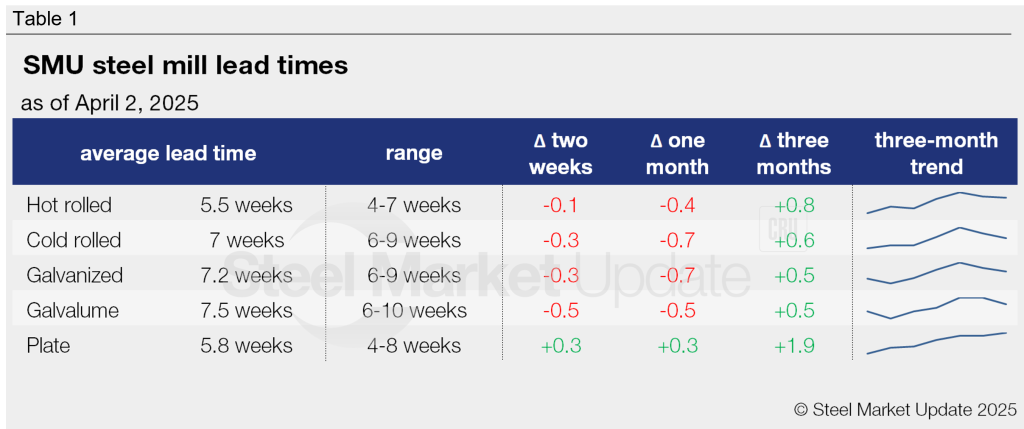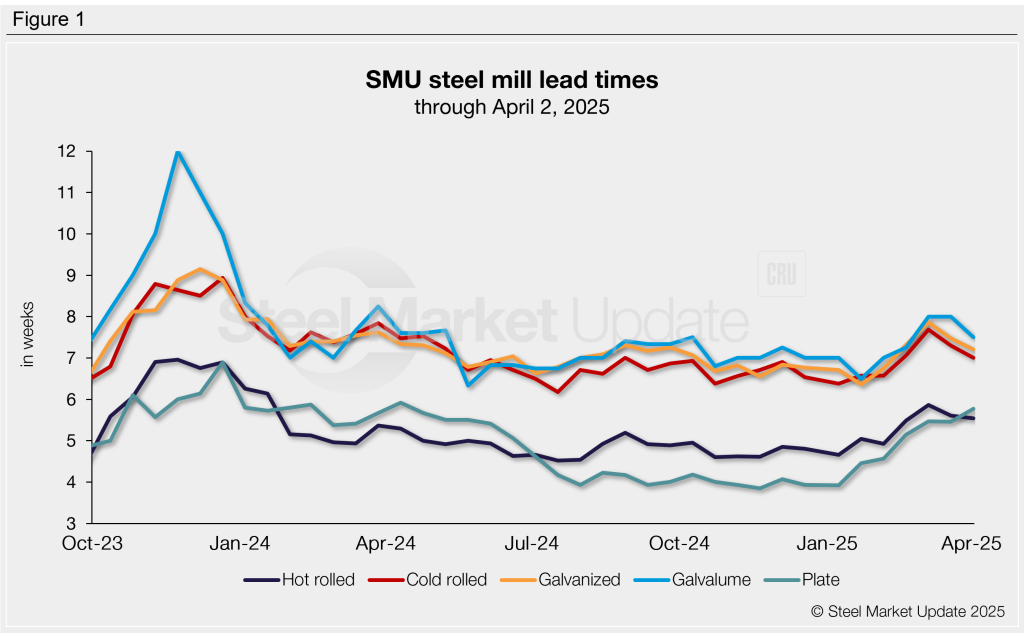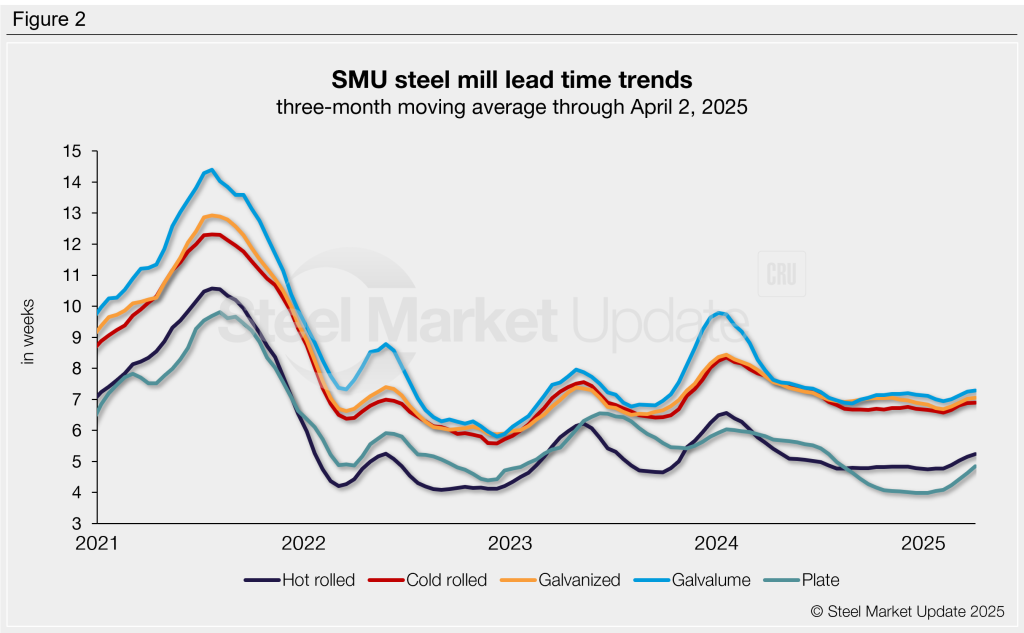Market Data

April 3, 2025
SMU Survey: Steel mill lead times show diverging trends
Written by Brett Linton
Buyers responding to our latest market survey reported that sheet lead times continue to gradually decline from recent highs. Meanwhile, plate lead times increased to levels last seen one year ago.
Steel mill production times had been extending since early February, when a tariff-induced buying surge prompted many buyers to pull forward future orders. As of this week, lead times are roughly a week and a half longer than the lows seen over the past year.
The average lead time for hot-rolled steel slipped to five and a half weeks. Tandem products range from seven to seven-and-a-half weeks, while plate has increased to just under six weeks.
Table 1 summarizes current lead times and recent trends (click to expand).

Compared to our March 19 market check, three lead time ranges shifted this week:
- Hot rolled: The longest lead time in our range declined from eight weeks to seven weeks.
- Galvanized: The longest lead time in our range decreased from ten weeks to nine weeks.
- Galvalume: The shortest lead time in our range declined from seven weeks to six weeks.

Future predictions
The majority of buyers (62%) predict lead times will hold steady across the next two months, unchanged from our mid-March survey. Of the remainder, 22% anticipate production times will contract (up from 15% previously), while 16% expect lead times to extend (down from 23%).
Here are some of the comments we collected:
“Demand is pausing.”
“Automakers will need to take longer summer shutdowns to beat down excess dealer inventories.”
“Not a lot of positives out there when you look at overall demand. Could be ‘tough sledding’ coming up for mill order books.”
“Lead times will remain short for the next 3 to 4 months.”
“I see mills taking action with idling lines to force prices up.”
“Slowdowns in demand will contract lead times.”
“Trump’s tariff nightmare will backfire.”
“The new system for tracking melt origin goes into effect in May, reducing fabricated imports.”
Trends
To smooth out fluctuations in our biweekly data, lead times can be calculated using a three-month moving average (3MMA) to better highlight trends. This week marks the second consecutive month where 3MMA lead times have increased across the board. This uptick follows a year-long decline, during which production times reached multi-year lows (Figure 2).
Over the past three months, the average lead times by product are as follows: hot rolled at 5.24 weeks, cold rolled at 6.89 weeks, galvanized at 7.06 weeks, Galvalume at 7.28 weeks, and plate at 4.84 weeks.

Note: These lead times are based on the average from manufacturers and steel service centers participating in this week’s SMU market trends analysis survey. SMU measures lead times as the time it takes from when an order is placed with the mill to when it is processed and ready for shipping, not including delivery time to the buyer. Our lead times do not predict what any individual may get from any specific mill supplier. Consult your mill rep for actual lead times. To see an interactive history of our steel mill lead times data, visit our website. If you’d like to participate in our survey, contact us at info@steelmarketupdate.com.







